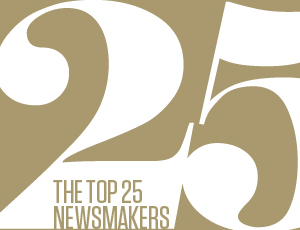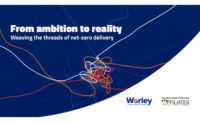

The U.S. is using up natural resources "as if it had five planets to work with," says engineer William A. Wallace, whose commitment to sustainable design and construction spans a 40-year career.
His technical skill and zeal in helping industry firms and clients determine if they're "doing the right project" laid the foundation for Envision, a unique rating tool that practitioners are embracing to rate sustainability across many types of infrastructure for the first time.
Envision takes a more holistic view of infrastructure projects, using a multi-tiered, credit-award approach based on resource use, operational resilience, eco-system restoration, life-cycle costs and return on investment, among other measures.
"Many, if not most, design assumptions for long-lived infrastructure have changed," says Wallace, president of consultant Wallace Futures Group LLC.
Wallace worked through the American Society of Civil Engineers, which partnered with the American Council of Engineering Companies and the American Public Works Association (APWA), in developing the rating system.
The groups then linked with the Zofnass Program for Sustainable Infrastructure at Harvard University, which also was developing infrastructure sustainability measures, to further refine the rating process.
That program is funded by Paul Zofnass, president of EFCG Inc., an industry financial management consultant, and his sister, Joan Zofnass, the firm's human resources director.
Wallace was key to integrating the systems to produce a more functional and less complex tool.
"Bill brought passion and professionalism to Envision's development," says collaborator Peter Binney, vice president of sustainable infrastructure at Merrick & Co.
 |
| Wallace |
Envision now is managed by the umbrella group, Institute for Sustainable Infrastructure, and supported by numerous industry firms.
Twelve design firms have each committed to having 100 staffers trained and credentialed in use of the new rating tool. Wallace has helped train industry professional to use Envision, and more than 1,500 people are now credentialed.
Three projects have achieved Envision ratings, with 36 more in the pipeline, says an APWA spokeswoman.
HDR designed an $80-million sport-fishing hatchery in Alaska, the largest such indoor facility in North America, and earned the first Envision Gold project rating in 2013.
Envision is also being used or considered on projects such as the new Tappan Zee bridge in New York, and infrastructure upgrades under way by agencies that include the San Diego Airport Authority, the Massachusetts Water Resources Authority and the Port of Long Beach, Calif.
The Inter-American Development Bank, which funds up to $100 billion in infrastructure work in Latin America and the Caribbean, has committed to use Envision to evaluate project sustainability, according to the Zofnass program.
IADB will announce at its annual meeting in Brazil at the end of March winners of its first-ever Infrastructure 360° Award, which will recognize the best sustainability measures used on projects located in its borrowing member nations.
"Projects designed to Envision sustainability standards will … demonstrate long-term value," says Greg Gould, Burns & McDonnell senior vice president, who notes its flexibility in being applied across numerous types of infrastructure projects.
"We have made a strong commitment to the Envision program, because it clearly fits with the Burns & McDonnell approach to deliver projects that are designed, built, and operated in a sustainable manner."
Adds HDR Sustainability Director Michaella Wittmann, "Envision will be a game-changer."





Post a comment to this article
Report Abusive Comment